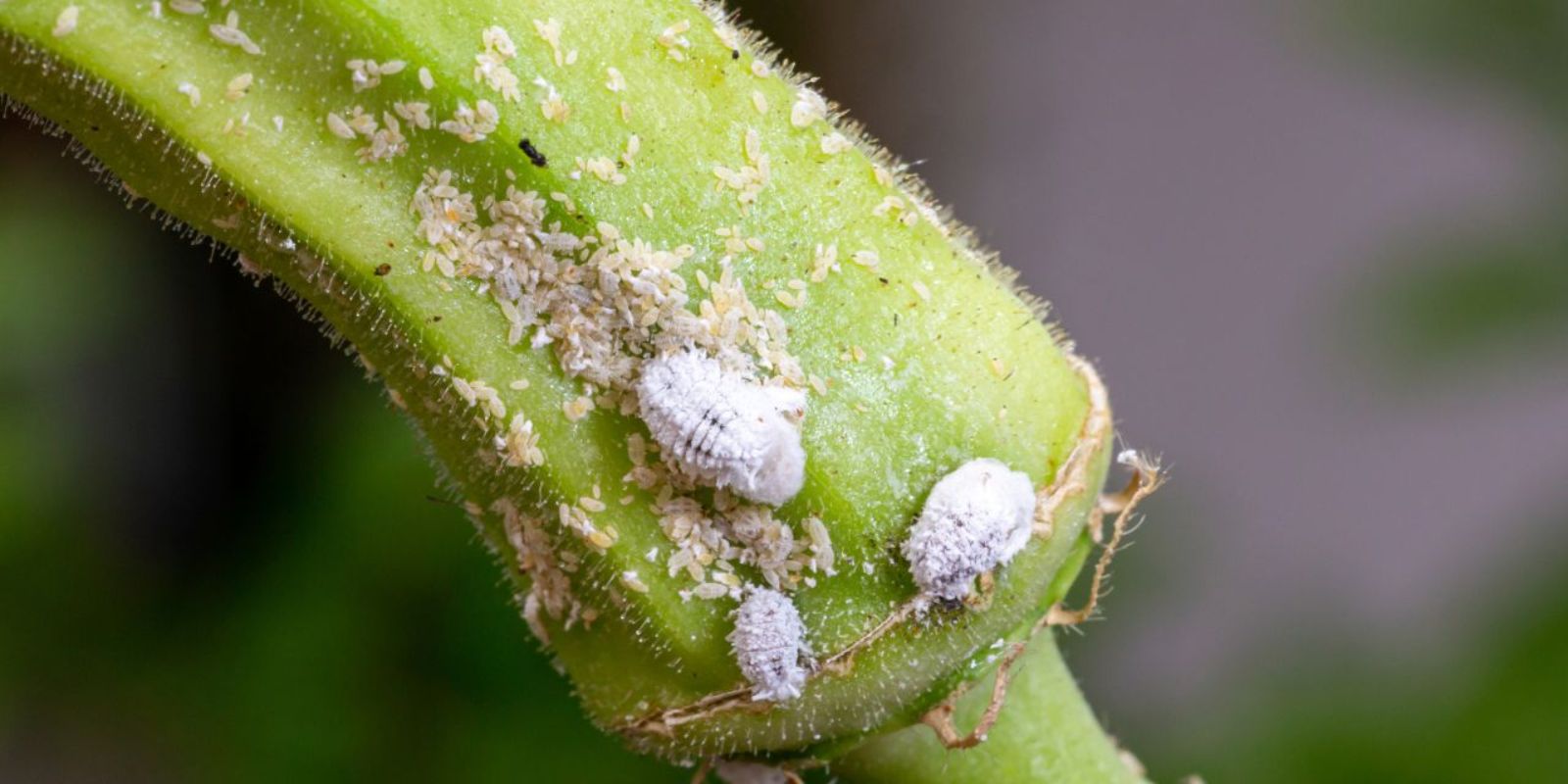Introduction
Mealybugs are notorious pests that can wreak havoc on both indoor and outdoor plants. Known for their cotton-like, white appearance, mealybugs feed on plant sap and can cause significant damage if left untreated. Fortunately, there are effective methods to manage and eradicate these pests. In this article, we’ll explore practical steps to eliminate mealybugs and protect your plants from future infestations.
Understanding Mealybugs
Mealybugs belong to the family Pseudococcidae and are common garden pests. They are small, soft-bodied insects covered with a white, waxy substance that resembles cotton. These pests typically congregate in clusters on plant stems, leaf axils, and the undersides of leaves. Mealybugs feed by inserting their piercing-sucking mouthparts into plant tissues, drawing out sap and causing plant stress. Their feeding can lead to yellowing leaves, stunted growth, and even plant death if not addressed promptly.
Identifying Mealybug Infestations
Before you can effectively combat mealybugs, it’s important to correctly identify them and assess the extent of the infestation. Look for the following signs:
- White, Cotton-Like Masses: Mealybugs produce a white, fluffy coating that is often found in clusters. They are most commonly seen in leaf axils, where leaves meet stems, and on the undersides of leaves.
- Sticky Residue: Mealybugs excrete a sticky substance known as honeydew, which can lead to sooty mold growth on plant surfaces.
- Wilting and Yellowing Leaves: Infested plants may show signs of stress, such as wilting, yellowing leaves, or poor growth.
- Presence of Ants: Ants are attracted to the honeydew produced by mealybugs. If you see ants around your plants, it might be a sign of mealybug activity.
Steps to Combat Mealybugs
Here are effective strategies to tackle mealybug infestations and restore the health of your plants:
1. Isolate Affected Plants
To prevent mealybugs from spreading to healthy plants, isolate any infested plants as soon as you notice the problem. This step helps contain the infestation and prevents it from affecting other plants in your garden or indoor space.
2. Manual Removal
For small infestations, manual removal can be highly effective:
- Use a Cotton Swab: Dip a cotton swab in rubbing alcohol (isopropyl alcohol) and gently wipe the mealybugs off the plant surfaces. Alcohol is effective in killing mealybugs on contact and helps dissolve their protective waxy coating.
- Prune Infested Parts: If the infestation is severe, you may need to prune off heavily infested stems or leaves to prevent the spread of mealybugs.
3. Apply Insecticidal Soap
Insecticidal soap is a natural and effective way to manage mealybug populations:
- Prepare the Solution: Follow the manufacturer’s instructions to mix insecticidal soap with water. Typically, you’ll use about 2-3 tablespoons of soap per liter of water.
- Spray the Plant: Apply the solution to all affected areas of the plant, ensuring thorough coverage of both the upper and lower leaf surfaces. Insecticidal soap works by suffocating mealybugs and disrupting their feeding process.
4. Use Neem Oil
Neem oil is another natural option that works well against mealybugs:
- Mix Neem Oil: Combine neem oil with water according to the package instructions. Typically, you’ll use 1-2 tablespoons of neem oil per liter of water.
- Spray the Plant: Apply the neem oil solution to the plant, focusing on areas with mealybugs. Neem oil acts as a repellent and disrupts the life cycle of mealybugs, reducing their population over time.
5. Monitor and Repeat
Regular monitoring is essential to ensure that mealybugs are effectively controlled:
- Inspect Plants Frequently: Check your plants for any signs of mealybug activity and address any new infestations promptly.
- Repeat Treatments: Depending on the severity of the infestation, you may need to repeat manual removal, insecticidal soap, or neem oil treatments every 7-14 days until the mealybugs are fully eradicated.
Preventing Future Infestations
To keep mealybugs at bay and protect your plants from future infestations:
- Maintain Plant Health: Healthy plants are less susceptible to pest problems. Provide proper care, including adequate watering, fertilization, and light conditions.
- Clean the Garden: Remove fallen leaves, debris, and weeds that can harbor pests. Regularly clean plant containers and surrounding areas.
- Use Beneficial Insects: Introduce natural predators, such as ladybugs or lacewings, that feed on mealybugs. These beneficial insects can help keep mealybug populations in check.
- Inspect New Plants: Before adding new plants to your garden or indoor space, inspect them carefully for any signs of pests to prevent introducing mealybugs.
Conclusion
Mealybugs may seem like a daunting pest problem, but with the right approach, you can effectively manage and eliminate them from your plants. By isolating affected plants, manually removing mealybugs, applying insecticidal soap or neem oil, and monitoring regularly, you can restore the health and vitality of your garden.
Call to Action:
Have you dealt with mealybugs in your garden? Share your experiences and any additional tips you have for managing these pests in the comments below! Let’s work together to keep our plants healthy and thriving. 🌿🦠

